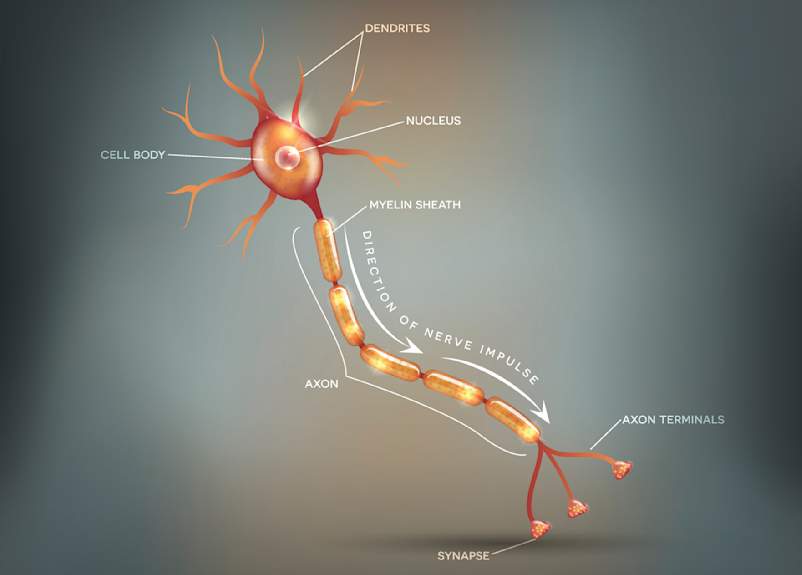~~~~~~~~~~~~~~~~~~~~~~~~~~~~~~~~~~~~~~~~
It’s easy to think that multiple sclerosis is caused by some kind of neurological disorder since it, you know, affects your brain, spinal cord, and optic nerves (a.k.a. the central nervous system, or CNS). But MS is actually an inflammatory autoimmune disease. As you may know, autoimmune diseases occur when the immune system mistakenly attacks healthy tissue in the body. In MS, the target is myelin, the fatty tissue that protects your nerve cells in the CNS.
Eventually, this damage (a process called demyelination) creates scars on your brain and spinal cord. And it’s these lesions that disrupt the flow of information that usually zips through your nerves so you can do all the things you do. The presence of lesions on your brain is a lot like the fingerprints left behind at a crime scene—when doctors spot them, they know that MS is the likely suspect.
In fact, that’s why MS is called MS. “Sclerosis” means scarring. “Multiple” means more than one. So, multiple sclerosis = MS. To really understand how MS affects the cells, it helps to have a little context on how nerve cells work in the first place.

All nerve cells, also called neurons, have distinct parts. Here’s what they do:
- The dendrites on the cell surface receive (like an antenna) electrical messages (commands) from both the brain and sensory organs (such as your eyes and ears).
- The soma is the cell body. It doesn’t play an active role in transmitting nerve impulses; the signals simply pass through it.
- The axon is the nerve fiber that actually transmits these messages. Think of an axon like a wire carrying an electric current.
- Axon terminals are the ends of the axon fibers.
- Synapses transmit the message onto the next nerve.
The axons are what you’ll be interested here, because damaged axons are what reeeally cause the confusion, dysfunction, and/or pain that come with MS. We’ll spare you the nitty gritty, but here’s what you need to know:
- When the axons send their messages through the CNS, they rely on the myelin sheath for insulation. Myelin coats the nerves and essentially keeps these signals running smoothly.
- When myelin is stripped, the signals go a little haywire. This occurs after a breakdown of the blood-brain barrier, which we all have to protect our brains from invading pathogens. While researchers still aren’t certain why this breakdown occurs in people with MS, they do know a broken or leaky blood-brain barrier allows certain immune cells to cross over into the brain, which then cause inflammation. And inflammation not only makes the barrier even leakier, it also disrupts communication between the nerves by stripping the myelin sheath, eventually leading to scarring—or sclerosis—on your brain.
Bottom line? All these changes to the nerves can bring a whole constellation of symptoms, including eye pain and vision problems, motor challenges, changes to the bladder and bowels (having to pee urgently far too frequently, for example), plus trouble focusing and remembering. And they’re different for everyone. Your experience with MS may vary greatly from the person sitting across from you in the waiting room.
CLICK Here to continue reading from HealthCentral
#healthcentral, #MS, #MultipleSclerosis
::::::::::::::::::::::::::::::::::::::;;;;;;;;;;;;;;;;;;;;;::::::::::::::::::::::::::::::::::::::::::::::::::::::::::::::
Information Shared by: MSViewsandNews,
to and for those affected by Multiple Sclerosis
::::::::::::::::::::::::::::::::::::::;;;;;;;;;;;;;;;;;;;;;:::::::::::::::::::::::::::::::::::::::::::::::::::::::::::::
Visit our MS Learning Channel on YouTube: http://www.youtube.com/msviewsandnews


